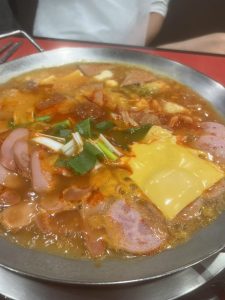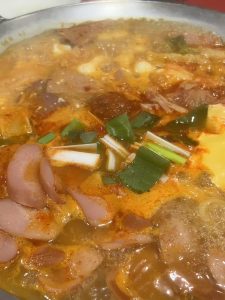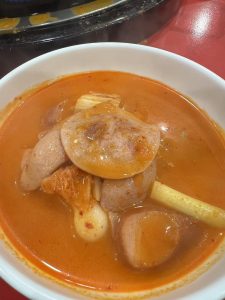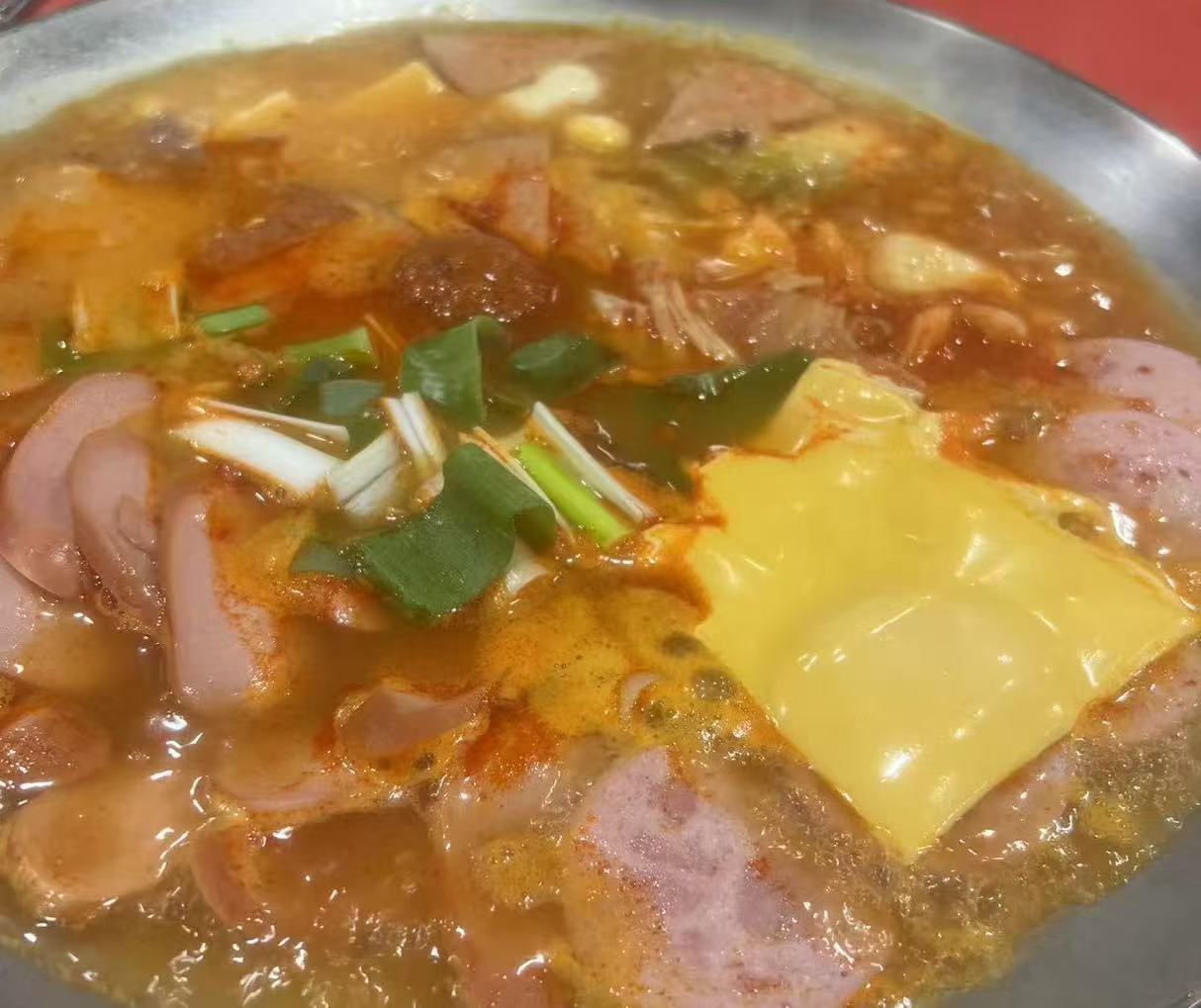


5 Reasons to Love Healthy Korean Budaejjigae & Texas Brisket Kimchi Stew

Healthy Korean Budaejjigae, or army stew, is a unique fusion of history, comfort, and bold flavor. Originally created in post-war Korea using surplus U.S. military ingredients, it has become a national staple. With a balance of protein, spice, and depth, it’s a dish beloved by generations.
What Makes Budaejjigae Healthy?
By reducing sodium and using whole food ingredients—such as organic kimchi, lean meats, tofu, mushrooms, and fresh vegetables—modern interpretations of Budaejjigae have transformed this rich dish into a healthier meal that still satisfies cravings. Ingredients like gochugaru (Korean chili flakes), garlic, onion, and scallions provide immune-boosting properties, while low-carb additions like konjac noodles or zucchini slices keep it diet-friendly. It's also easy to make gluten-free and dairy-free, depending on your choice of protein and broth base.
Regional Styles of Healthy Korean Budaejjigae
Budaejjigae varies by region in Korea, each adding its own local twist. In Uijeongbu, where many believe the dish originated, the stew tends to be spicier and includes a thicker broth with more meat-based ingredients. The Munsan region often features a clearer broth and less processed meat, offering a lighter and more delicate version of the stew. Meanwhile, Songtan-style budaejjigae is known for incorporating American cheese and baked beans, highlighting its roots in U.S. military rations. These regional styles showcase the versatility of the dish and how it adapts to local tastes while staying true to its identity.
Each region also contributes to the experience of eating budaejjigae in different ways. Uijeongbu restaurants often serve it in heavy cast iron pots over direct heat, enhancing the intensity of flavor. Munsan spots may lean toward adding rice cakes (tteok), mung bean sprouts, and more vegetables, while Songtan eateries embrace the Americanized feel, sometimes even offering it with a side of garlic bread or fries. These variations are a delicious reminder of Korea’s ability to reinterpret and evolve traditional comfort foods.
Furthermore, some regions have embraced more modern ingredients like vegan sausages, gluten-free tofu, and local farm vegetables. Food culture in Korea is deeply regional, and Healthy Korean Budaejjigae acts as a culinary canvas reflecting that diversity.
Texas-Style Brisket Kimchi Stew
Inspired by Korean-American chefs in Texas, this version swaps ham and sausage for smoky brisket. The result? A deeply savory and hearty stew that reminds many of traditional Budaejjigae but with a barbecue twist. Brisket adds a melt-in-your-mouth texture that pairs surprisingly well with spicy kimchi broth, bringing new dimensions to this beloved dish.
In places like Austin and Dallas, this stew is served alongside cornbread or even jalapeño slaw, bridging Texan and Korean flavor traditions. The brisket is often smoked for hours before being added to the stew, making it incredibly tender. This variation has quickly gained popularity not only among Korean Americans but also among foodies who appreciate cross-cultural fusion.
👉 See Texas-style Kimchi Stew at Korea House
Budaejjigae vs. Brisket Stew: A Flavor Comparison
- Base: Kimchi broth vs. smoked brisket broth
- Protein: Ham & sausage vs. brisket
- Spice Level: Moderately spicy vs. deep and smoky
- Serving: Tabletop boil vs. slow-simmered pot
- Cheese Factor: Optional in Korea, expected in Texas versions
- Side Dishes: Korean banchan vs. cornbread or pickled jalapeños
Want More Healthy Korean Recipes?
- Healthy Korean Budaejjigae Recipe Guide
- 10 Easy Low-Carb Korean Lunches
- Top 5 Korean Superfoods for Immunity
Conclusion
Whether you prefer the classic flavors of Healthy Korean Budaejjigae or the smoky punch of Texas Brisket Kimchi Stew, both dishes offer a mouthwatering way to experience Korean comfort food through a modern lens. And by exploring regional varieties—from Uijeongbu to Songtan—you get a deeper appreciation for how this dish connects history, locality, and evolving taste buds.
For those seeking to make healthier lifestyle choices without giving up flavor, Budaejjigae is the perfect starting point. It adapts well to modern dietary needs while keeping its heartwarming appeal intact. Explore its many forms, try new ingredients, and don’t hesitate to craft your own version. After all, at its core, Healthy Korean Budaejjigae is a dish born of creativity and resilience.
Pingback: 10 Easy Low-Carb Lunches for Busy Weekdays - trendbiteguide
Pingback: Starbucks Café Brûlée Frappuccino Review 2025: 30th Anniversary Limited Edition - trendbiteguide
Pingback: Seogam Saengso Geogi in Nowon: Stone-Grilled Pork Belly & Jjapagetti Combo - trendbiteguide